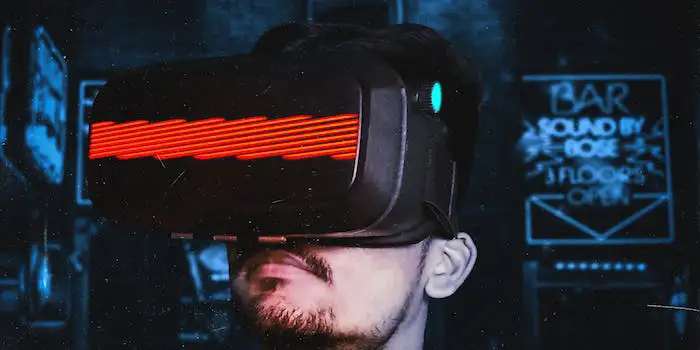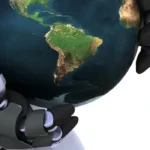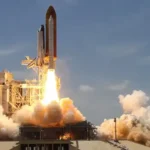Technological progress is nothing new to us, and we anticipate much more in the future years. In recent years, technology has grown at a phenomenal pace. I still remember a couple of years back using my iPhone 5 where you had amazing applications and amazing camera features.
Today, we already have the more advanced iphones that are splash, water, and dust resistant. It also has a true-depth camera, Face ID, and a lot more incredible features.
In this article, I will show you the future of technology by discussing different techs.
- Fusion Energy: power generation that generates electricity
- Space exploration
- Robots in manufacturing and service sector
- Hyperloop: high-speed transportation
- Drones run by artificial intelligence
- Self-driving trucks: transportation revolution
- 3D printing of metals and organs
- AI-driven smart stores
- Virtual reality in the education system
- Nanotechnology in healthcare
1. Fusion Energy: power generation that generates electricity
If this is your first time hearing about fusion energy, you may be scratching your head right now since you didn’t anticipate this to be the first on the list.
Today, we commonly generate energy at a power plant utilizing combustion, nuclear, steam turbines, or fossil fuels. However, the current method of producing power is prone to danger.
For the first time, US government scientists have achieved a net energy gain in a fusion reaction, paving the way for limitless, zero-carbon energy.
Fusion energy, with zero emissions and on-demand availability, has the potential to replace existing infrastructure and electrify new industries.
The benefits of fusion energy are very beneficial to the next generation as it is clean, abundant, and scalable.
It also has the potential to be a long-term energy source since it uses an abundant fuel supply and produces no greenhouse emissions.
Fusion energy technology is appealing because it addresses society’s need for abundant energy sources that are scalable and safe.
Although many experts feel that fusion power plants are still decades away, the technology’s promise is undeniable.
2. Space exploration
I know you’re thrilled about this, and sure, the future of space travel appears to be exciting since we have top individuals working on this program, like Elon Musk and his Space X Program, Jeff Bezos and his Blue Origin, and NASA.
Most scientists believe that working in the space business is an incredibly exciting and hectic time. Several novel events are taking place above the Earth’s atmosphere.
The 21st century is very amazing, it could potentially lead us to a 10-minute space vacation, having space hotels, and even stepping on mars.
If we can populate Mars and get there sooner, there’s a potential we’ll have many colonies there. However, at the moment, only robots are being sent to Mars for exploration.
There is a new age in spaceflight happening right now, and NASA is attempting to bring us there with smaller, cheaper, and reusable spacecraft. However, for the previous 20 years, it has proved a setback for the space program.
3. Robots in manufacturing and service sector
Robots in the manufacturing and service sectors are not new, but there will be more of them in the future.
As technology progresses, inventors will start inventing robotic automation systems to stay competitive throughout the years.
Robotic solutions ensure that operations are efficient, safe, and accurate, allowing people to focus on innovation and other procedures that establish the framework for growth and success.
In manufacturing, robots are utilized to do repeated jobs, which simplifies the whole assembly procedure. Robots and humans work together to create products.
Many professions in various industries are dangerous or involve high-volume product production, which can be damaging to humans.
Employees may grow fatigued or distracted owing to the repetitious nature of their tasks, which can lead to errors even in the short term. Robots, on the other hand, can avoid such errors due to their high degrees of machine learning.
Robots in service industries are also valuable, as I have seen firsthand in Japanese restaurants.
The robots I observed were not built to employ force or to address a growing problem. They can’t even get up the stairs. It was just like having a waitress who serve us dinner.
4. Hyperloop: high-speed transportation
Yes, another Elon Musk innovation has sparked widespread interest. This is a revolutionary method of transportation that promises to convey people and cargo quickly.
This project’s principle is similar to trains and aircraft, however, the speed has a barrier because it must overcome a lot of friction and air.
They eliminate air resistance and friction with the hyperloop project, allowing them to travel at faster speeds.
The hyperloop project is made up of a network of tubes, it is ultra-high speeds, has emission-free transportation, and can directly connect to different cities.
Consider a world in which you can travel between cities in a matter of minutes. By linking transportation hubs directly, Hyperloop minimizes door-to-door travel times.
Trials are being done from Los Angeles to San Francisco. There are also trials from New York to Washington D.C., with an average journey duration of 3 hours while driving. However, with the hyperloop, it may take only 30 minutes or less.
5. Drones run by artificial intelligence
Wait drones can still be improved? Yes of course! Drones can access areas that people cannot readily access.
Drones can perform a lot of things compared to helicopters such as it allows them to capture clear, high-quality photos and videography.
Although most of us have no idea what the future of drones will be, they will have a significant influence on our society.
Drones, like the automobile sector, have a promising future. It will alter in ways you never anticipated during the next decade.
In the next decade, swarms of drones will be delivering small packages, several companies are doing some trials on the effectiveness of delivering your products. Walmart and Amazon have been doing it for a few years back already.
Drones run by artificial intelligence will be the next new thing. Drones may be controlled using AI to fly autonomously.
Drones may now be operated without a human pilot, making them much more flexible.
The most popular way for employing AI to fly drones is to program the drone’s flight using GPS coordinates. It will be beneficial to use software such as Google Maps or smartphone applications.
6. Self-driving trucks: transportation revolution
If you already know this, you’re a die-hard Elon Musk supporter. Thousands of self-driving trucks will be on the road during the next decade since one of the key ambitions of today’s inventors is to revolutionize transportation.
Self-driving trucks have the potential to enhance supply chain efficiency, save fuel costs, and promote road safety by lowering accidents.
To offer you some numbers, over 500,000 truck collisions occur in the United States each year, with 133,000 trucking accident injuries occurring annually.
Because driving a truck is an incredibly exhausting profession, stress and sleepiness are the primary problems that truck drivers face nowadays; it is also the cause of accidents.
Self-driving or autonomous trucks provide a significant change to improve road safety while also alleviating rising strain on supply lines.
The growth of self-driving trucks is encouraging for the transportation business because it will deliver various advantages. When compared to a single driver, the vehicles will function consistently and without constraints for longer hours.
7. 3D printing of metals and organs
Three-dimensional (3D) printing is an additive manufacturing technology that turns a computer design into a real thing.
In the past years, 3D printing is becoming useful to some industries such as healthcare and construction. Just recently, inventors made some significant improvements that can be able to print metals and organs.
One company in 2017, even started creating 3D metal printers. The capacity to additively build near-net form items has long been seen as a manufacturing holy grail.
As a result, inventors believe that 3D printing of metals seems likely to deliver that promise. Metal 3D printing may produce pieces that would be difficult to produce using any other type of production.
3D-printed organs are also predicted in the next decades; they are particularly valuable in the healthcare business since they can aid in research and save lives.
Examples of 3D-printed organs that are already in use include printed heart valves, blood veins, teeth, and many others.
8. AI-driven smart stores
Employees in today’s retail business will assist you when purchasing things. The idea behind AI-powered smart stores is that they would be unmanned, transforming the way clients buy things while also studying their behavior to eliminate inconsistencies.
Possibly in the next decade, AI-driven smart stores will start popping up worldwide. Smart stores will eliminate cashiers, when the consumer is done shopping, they exit the store, and all of their purchases are charged to their account just by looking at their smartphones.
Amazon Go is the best example of this, it is a new kind of store that features the most modern shopping technologies available. There are no lineups and no checkouts; simply grab and go!
AI-driven smart stores without staff will have improved security. There is less risk to their safety when fewer employees are threatened with theft or by rude customers.
Smart stores driven by AI will have algorithms that can recognize and accept payments from repeat consumers while detecting and avoiding possible fraud.
Retail owners might want to consider transforming their store powered by AI now because moving to more digital choices to minimize lines, better use staff expertise, or tailor your client experience may be well worth the expense.
9. Virtual reality in the education system
I understand some of us to dislike the current educational system, but it may become much more engaging in the future. Computers have been required in schools and other courses for decades.
However, if virtual reality simulations become available in the educational system, as many anticipate, they might lead to plenty of innovations and increased learning for students.
When compared to a teacher’s explanation, children will grasp more about what is going on.
You could transport kids back in time and show them what was going on in our history. Students may also learn more if they can watch what is going on rather than read from a textbook.
If VR reality becomes available in our educational system, children will certainly be more interested in history and geography since it will be a lot more enjoyable, engaging, and memorable.
Education is something that can benefit from advanced technologies, and our educational systems might be changing in the next decade to increase student learning.
10. Nanotechnology in healthcare
Nanotechnology was just a human imagination or science fiction, but the idea of creating gadgets and machines smaller than the width of your hair is now becoming a reality.
Healthcare is one of the most promising uses and technologies of our newfound capacity to modify individual atoms and molecules.
Scientists think that nanotechnology may help save people’s lives because misdiagnosis still occurs today.
It claims over 80,000 lives each year and harms the recovery of millions more individuals.
Nanotechnology has the potential to transform the way doctors gather medical data. They will be able to identify chemical changes on the spot by implanting nanosized diagnostic devices throughout a human’s body.
This nanotech might be configured to collect data on certain bodily areas, poisons, and other things. Nanotechnology makes real-time monitoring of a patient’s health possible.
Nanotechnology breakthroughs in healthcare are both thrilling and hopeful since they just scratch the surface of what’s to come.
Final Thoughts
Hundreds of technical advancements will occur in the future. The items I’ve listed here are already in the works, and I feel they are the technologies that will undoubtedly impact the future.
The lists I supplied are not predictions; investigations and trials are now underway. Numerous opportunities in technology because our human brain is so creative.










